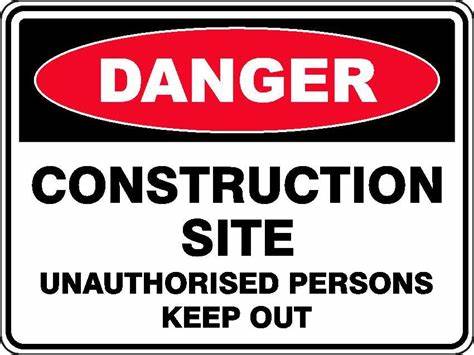All Australian construction sites must have workplace safety signage. High visibility of safety signs in Australia can help prevent injuries and ensure that all employees and visitors are aware of potential hazards. If there is no signage, employees may be unaware of risks on construction sites, and employers may face significant legal and workplace health and safety issues.
This blog looks at:
- Why do construction sites require safety signs?
- The various kinds of workplace safety signs
- What distinguishes TTFS’s safety signage?
Why Do Construction Sites Require Safety Signs?
Construction signs are required to ensure that a company complies with workplace occupational health and safety regulations. There are numerous safety signs in Australia for construction sites, each with a unique design and purpose.
It is important to note that safety signs should not be relied on solely, and there is no substitute for properly trained employees. Signs serve a purpose in that they serve as a reminder to those who are unfamiliar with a construction site or processes.
In allowing a person to make an immediate decision, simple graphics or words work far better than complex instruction. As a result, safety signs must be simple to understand. Many are quickly identified, such as the red circular prohibition sign, but others may require more specificity depending on the situation.
Australia has legislation that mandates signs in any occupational environment, whether it’s a construction site or an office building. Compliance with these laws is thus both advantageous and necessary.
What Are the Different Types of Construction Safety Signs?
These are some of the most common safety signs used by Australian businesses to comply with occupational health and safety standards:
Signs Required
These signs are specific to tasks that must be completed in particular construction site areas. These could include actions like “headgear must be worn,” “high visibility vests must be worn,” and “foot protection must be worn in this area,” among others. These signs typically have a white background, black text, and a blue circle depicting the necessary action.
Signs of Prohibition
Prohibition signs are specific to prohibited actions. These could include things like “one is not permitted to use their mobile phone,” “No smoking in this area,” “do not enter,” and so on. Prohibition safety signs typically consist of black text on a white background and a red circle with a line through an image depicting a specific action.
Signs of Danger
Warning signs, also known as hazard signs, are designed to alert people to a hazard or potential hazard, thereby improving safety. Most warning signs in Australia are black text on a yellow background with a triangle addressing the danger. ‘Slippery when wet’ is one example of a warning sign.
Fire Safety Signs
In the event of a fire, fire safety signs are used to direct workers and visitors to the location of fire extinguishers and other safety equipment. Typically, fire safety signs have white text on a red background.
Emergency Warning Signs
These signs direct workers to emergency facilities and equipment. These could include things like emergency exits and first-aid kits. A typical emergency information sign has white text on a green background.
Other Warning Signs
These signs are designed to alert people to potential hazards or dangerous goods that could endanger their lives. Danger signs have black text and a red oval with ‘DANGER’ written in white on the top.
These were some of the importance of safety signs in the workplace.






